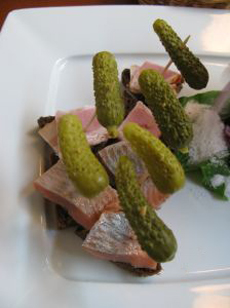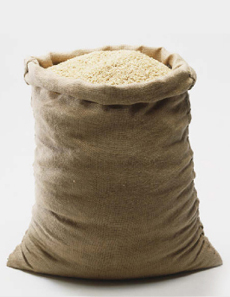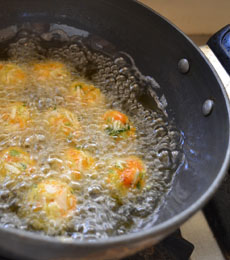|
Today’s tip comes from McCormick, and it illustrates how easy it is to make gourmet condiments in your kitchen. Just open the bottle of mayonnaise, mustard or ketchup and add herbs and spices.
Use the recipes below on burgers, grilled chicken, hot dogs and brats, sandwiches/wraps and anything requiring some condiment verve.
Just combine the ingredients and whisk thoroughly to blend. Letting them sit in the fridge for a half hour or longer allows the flavors to meld.
How do you define a condiment? See below.
> National Condiment Month is September.
> National Ketchup Day is June 5th. The history of ketchup.
> National Mayonnaise Day is May 5th. The history of mayonnaise.
> National Mustard Day is the first Saturday in August. The history of mustard.
GOURMET KETCHUP RECIPES
Asian Spiced Ketchup: 1 cup ketchup, 1 teaspoon soy sauce, 1/2 teaspoon garlic powder, 1/2 teaspoon ground ginger.
Cajun Spiced Ketchup: 1 cup ketchup, 1 tablespoon McCormick Perfect Pinch Cajun Seasoning.
Curry Ketchup: 1 cup ketchup, 1 tablespoon curry powder.
Horseradish Ketchup: 1 cup ketchup, 1 tablespoon prepared horseradish, optional 1 teaspoon lemon zest.
Customize Your Own Ketchup: 1 cup ketchup plus a total of 2 teaspoons of your your favorite herbs and/or spices; adjust seasonings to taste.
GOURMET MAYONNAISE RECIPES
Southwest Mayo: 1/2 cup mayo, 1-2 tablespoons lime juice, 1 teaspoon chili powder, 1 teaspoon ground cumin.
Smokehouse Maple Mayo: 1/2 cup mayo, 1 teaspoon Grill Mates Smokehouse Maple Seasoning.
Lemony Herb Mayo: 1/2 cup mayo, 1 teaspoon basil, 1/2 teaspoon oregano, 1/2 teaspoon lemon juice, 1/2 teaspoon garlic powder.
Customize Your Own Mayo: 1/2 cup mayo plus 1/2 teaspoon of two of your favorite herbs and/or spices; adjust seasonings to taste.
GOURMET MUSTARD RECIPES
Honey Mustard: 1/2 cup mayo, 2 tablespoons ground mustard, 2 tablespoons honey, 1 tablespoon water (NOTE: This is McCormick’s recipe; we simply blend honey into Dijon mustard).
Herbed Mustard: 1/2 cup Dijon mustard, 1 teaspoon dill weed.
Worcestershire Pub Mustard: 1/2 cup Dijon mustard, 1 teaspoon McCormick Grill Mates Worcestershire Pub burger seasoning.
Customize Your Own Mustard: 1/2 cup mustard plus 1/2 teaspoon of two of your favorite herbs and/or spices; adjust seasonings to taste.
FOOD 101: CONDIMENTS
A condiment is a food product used add flavor to another food. Hot sauce, ketchup, mayonnaise, mustard, ketchup, salad dressing, relish, syrups and vinegar, among many others, are condiments.
The word is first found in print in late Middle English, in the period of 1400–1450, derived from Middle French. The French took it from the Latin condimentum, meaning spice, seasoning or salt, and the verb condire, to preserve, pickle or season.
There is disagreement as to what constitutes a condiment. Some say that salt and spices are condiments; others say that a condiment must be more complicated and moist—i.e, with some liquid in its make-up.
Formal sauces belong in the sauce category; they are not condiments. Thus, while a mayonnaise dip for asparagus is a condiment, hollandaise sauce on the asparagus is not.
Relish is a condiment; pickles are not (they’re vegetables, which happen to be preserved). If you‘re not sure if something is a condiment or belongs in another category, bring the debate to the dinner table. You’ll have fun working it out.
|
|
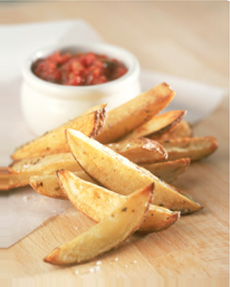
[1] We mixed ketchup with salsa: What a great idea! (photo © Potato Goodness)!
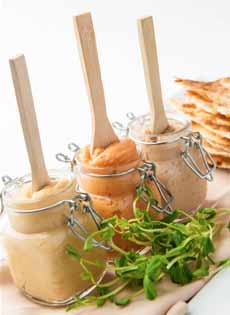
[2] For sandwiches, burgers, deviled eggs, whatever, it’s great to have a choice of flavored mayonnaise (photo © Chef Eric LeVine).

[3] Fries with three different flavors of mayonnaise dips (photo © Le District | NYC).

[4] We mixed mustard with sauerkraut to create a tangy, textured mustard for pork chop (photo © National Pork Board).
|



